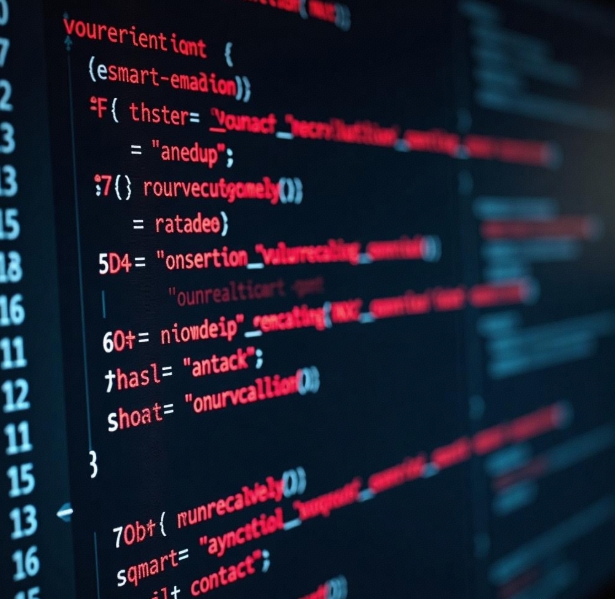Security Challenges and Protective Measures in Blockchain Development
- latest articles
- 1.DApp Development & Customization: Merging Diverse Market Needs with User Experience 2.Analysis of the Core Technical System in DApp Project Development 3.How to achieve cross-chain interoperability in Web3 projects? 4.How does the tokenization of points reconstruct the e-commerce ecosystem? 5.How to Set and Track Data Metrics for a Points Mall? 6.What is DApp Development? Core Concepts and Technical Analysis 7.Inventory of commonly used Web3 development tools and usage tips 8.Development of a Distribution System Integrated with Social E-commerce 9.Six Key Steps for Businesses to Build a Points Mall System 10.What is DApp Development? A Comprehensive Guide from Concept to Implementation
- Popular Articles
- 1.Future Trends and Technology Predictions for APP Development in 2025 2.Analysis of the DeFi Ecosystem: How Developers Can Participate in Decentralized Finance Innovation 3.From Zero to One: How PI Mall Revolutionizes the Traditional E-commerce Model 4.DAPP Development | Best Practices for Professional Customization and Rapid Launch 5.Recommended by the Web3 developer community: the most noteworthy forums and resources 6.From Cloud Computing to Computing Power Leasing: Building a Flexible and Scalable Computing Resource Platform 7.How to Develop a Successful Douyin Mini Program: Technical Architecture and Best Practices 8.Shared Bike System APP: The Convenient Choice in the Era of Smart Travel 9.How to Create a Successful Dating App: From Needs Analysis to User Experience Design 10.From Design to Development: The Complete Process of Bringing an APP Idea to Life
With the rapid development of blockchain technology, an increasing number of enterprises and individuals are beginning to focus on the applications of this emerging technology. While blockchain's characteristics such as decentralization and immutability provide strong guarantees for data security, this does not mean that blockchain technology itself is free from security issues. Security challenges in blockchain development are becoming increasingly prominent, especially concerning smart contracts, consensus mechanisms, and data privacy. This article will explore in detail the security challenges in blockchain development and propose corresponding protective measures, aiming to help developers and enterprises better address the challenges of blockchain security.
I. Security Challenges in Blockchain Development
1.1 Smart Contract Vulnerabilities
Smart contracts are a core component of blockchain technology, automatically executing contract terms through code. Due to their decentralized and automated nature, smart contracts are widely used in various scenarios such as finance, insurance, and supply chains. However, the security of smart contracts has always been a prominent issue. Many smart contracts have design flaws or coding vulnerabilities, providing opportunities for attackers.
Typical Case: In 2016, the DAO (Decentralized Autonomous Organization) project suffered a severe attack due to a smart contract vulnerability. Hackers exploited a recursive call vulnerability in the contract to transfer a large amount of Ether to their own accounts, ultimately resulting in a loss of approximately $50 million. This incident also drew widespread attention in the blockchain industry to the security of smart contracts.
1.2 51% Attack
A 51% attack refers to an attacker in a blockchain network controlling more than 50% of the computing power to tamper with the historical transaction records of the blockchain. Under the Proof of Work (PoW) consensus mechanism, miners compete in computational power to verify transactions and create blocks. When an attacker controls sufficient computational power, they can carry out double-spending attacks, i.e., reusing the same funds for transactions or reversing confirmed transactions. This type of attack poses a significant threat to the security of the blockchain network.
Although the computational power of mainstream public chains like Bitcoin is extremely vast, making the probability of a 51% attack low, it remains a security concern for some smaller public chains.
1.3 Data Privacy and Protection
Although blockchain has the advantage of decentralization, its transparency also brings challenges to data privacy. In traditional centralized systems, data storage and access are typically controlled by one or a few institutions, allowing for effective privacy protection measures. However, in blockchain, all transaction records are public to all participants, which threatens personal privacy.
For example, users' transaction addresses, transfer amounts, and other information can be publicly queried. Although this information does not directly link to the user's real identity, it can still be analyzed through certain methods to reveal the user's behavior patterns or identity information. Therefore, how to protect user privacy while ensuring transparency has become a major challenge for blockchain technology.
1.4 Security of Consensus Mechanisms
The consensus mechanism in a blockchain system is a crucial mechanism for verifying transactions and generating new blocks. Different blockchain systems adopt different consensus mechanisms, such as Proof of Work (PoW), Proof of Stake (PoS), and Byzantine Fault Tolerance (BFT). Each consensus mechanism has its unique security challenges.
For example, while the PoW mechanism is highly secure, its energy consumption is extremely high. In contrast, the PoS mechanism is more energy-efficient but may face the "rich get richer" problem, where most tokens are concentrated in the hands of a few, potentially affecting the system's fairness and security.
II. Protective Measures in Blockchain Development
Faced with the aforementioned security challenges, blockchain developers and enterprises need to adopt a series of protective measures to ensure the security and stability of blockchain systems.
2.1 Code Auditing and Smart Contract Security
One of the most effective protective measures for smart contract security is code auditing. Smart contract developers should conduct comprehensive security reviews of contract code to check for potential vulnerabilities and defects. Currently, many third-party security companies offer smart contract auditing services to help developers identify and fix security issues in the code.
Additionally, developers should avoid blindly relying on third-party libraries or code and instead use verified, open-source smart contract frameworks, such as those provided by OpenZeppelin, to reduce potential security risks.
Security Practices:
During smart contract development, use technical means such as unit testing and integration testing to ensure the contract operates correctly in various scenarios.
Use formal verification tools (such as Solidity's Formal Verification) to verify the functionality of smart contracts, ensuring they are mathematically correct.
2.2 Preventing 51% Attacks
To prevent 51% attacks, developers can take the following measures:
Increase the blockchain's computational power: By increasing the number of miners or nodes in the network, it becomes more difficult for an attacker to control 51% of the computational power. Mainstream public chains like Bitcoin have a low probability of 51% attacks due to their vast computational power.
Adopt new consensus mechanisms: Consensus mechanisms like Proof of Stake (PoS) are more resistant to 51% attacks compared to PoW, as attackers need not only to control a large amount of computational power but also to possess a significant proportion of tokens.
2.3 Strengthening Data Privacy Protection
To address data privacy issues in blockchain, developers can adopt the following protective measures:
Zero-Knowledge Proofs (ZKP): Zero-knowledge proofs are a cryptographic technique that allows users to prove the authenticity of certain information without revealing any specific data. Through zero-knowledge proofs, users can conduct transparent transactions and identity verification while ensuring privacy.
Privacy chains and privacy coins: Privacy chains (such as Monero and Zcash) enhance transaction privacy and ensure user anonymity through technologies like ring signatures and homomorphic encryption.
2.4 Optimizing Consensus Mechanisms
To address the security issues of different consensus mechanisms, developers can choose appropriate mechanisms based on their needs and make appropriate optimizations. For example, using the Byzantine Fault Tolerance (BFT) mechanism can reduce energy consumption while ensuring security. Additionally, some emerging consensus mechanisms, such as Proof of Stake (PoS) and Delegated Proof of Stake (DPoS), can enhance the network's security while improving the system's scalability and efficiency.
III. Conclusion
Blockchain technology undoubtedly demonstrates great potential in many fields, but its security issues remain one of the bottlenecks in technological development. Challenges such as smart contract vulnerabilities, 51% attacks, data privacy issues, and the security of consensus mechanisms require developers to fully consider and adopt effective protective measures when designing and implementing blockchain systems. With the continuous advancement of technology and the improvement of security protection methods, it is believed that blockchain technology will achieve safer, more reliable, and more efficient applications in the future. Developers and enterprises should continue to focus on blockchain security and enhance their technical capabilities to remain invincible in the fierce competition.
-

How to achieve cross-chain interoperability in Web3 projects?
With the continuous development of WEB3 technology, Web3 has gradually become an···
-

Inventory of commonly used Web3 development tools and usage tips
With the continuous development of blockchain technology, Web3 has become a hot ···
-

Web3 development trend prediction: analysis of future technology directions and application scenarios
With the gradual development of blockchain technology, the concept of Web3 has m···

 Blockchain
Blockchain












